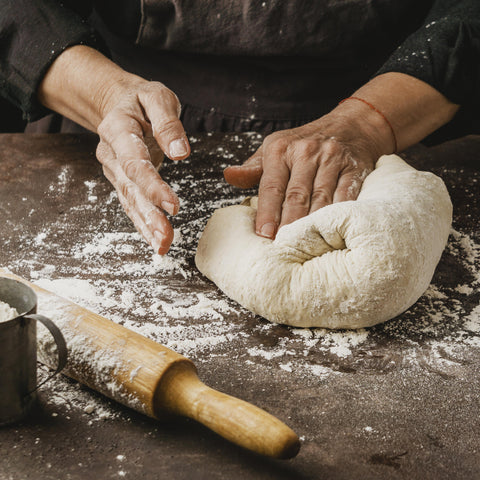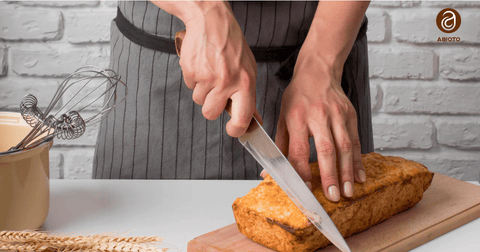If you’re serious about bread, you know this: the rise makes all the difference. Flat, dense loaves? Nobody wants those. Puffy, golden, soft-on-the-inside-but-crispy-on-the-outside loaves? That’s the goal. And the secret to getting there often comes down to one simple tool: a bread basket for proofing.
Yep. That humble, round little basket can change your baking game forever.
What Is a Bread Basket for Proofing?
Let’s break it down. A bread basket for proofing, sometimes called a banneton or brotform, is a basket that holds your dough during the final rise. Its purpose? Shape. Structure. Support. You put your dough in, let it rest, and it comes out perfectly formed, ready to bake.
Think of it like a tiny dough hammock. It cradles your bread while giving it that professional look. You don’t just get a better shape, you get better texture, better crust, and a loaf that practically screams “homemade genius.”
Why You Need One
Here’s the thing: anyone can mix flour, water, and yeast. But not everyone can turn that into bread that looks as good as it tastes. A bread basket for proofing gives you an edge.
Without it, your dough spreads out, you get weird lumps, or your loaf flattens. You’ve been there. We’ve been there. We’ve had loaves that ended up looking… sad. Flat. Unimpressive. And yes, heartbreaking after all that effort.
With a bread basket, the dough holds its shape. The ridges of a rattan basket even leave a beautiful pattern on the crust. It’s simple, but it adds a wow factor. And who doesn’t like a little wow on the kitchen counter?
Choosing the Right Basket
Not all baskets are created equal. When you pick a bread basket for proofing, look for these things:
-
Size: Your dough should fit snugly. Too small, and it overflows. Too big, and it spreads too much.
-
Material: Rattan is classic. Wooden is sturdy. Linen-lined baskets are soft on the dough. Each has its charm.
-
Shape: Round for boules, oval for batards. Pick what matches your baking style.
Abioto offers some of the best baskets around. Handmade, high-quality, just the right size for any home baker. We like them because they’re simple, effective, and make you look like a pro without any fancy moves.
How to Use Your Bread Basket for Proofing
Okay, this is where things get fun. Using a bread basket for proofing is easy, but there are a few steps to remember if you want perfect results.
-
Dust It Well – Use flour, rice flour, or a mix. You want the dough to release easily. Nothing ruins a loaf faster than a basket that sticks.
-
Shape Your Dough – Whether it’s a boule, batard, or whatever shape you fancy, get it roughly where you want it. It doesn’t have to be perfect. The basket does the heavy lifting.
-
Place Dough Carefully – Put it seam-side up or down, depending on your recipe. This controls how it opens in the oven.
-
Cover and Rest – Use a cloth, lid, or just a warm spot. Let it rise until it nearly doubles in size. Patience here is key.
-
Transfer to Oven – Gently flip your dough onto a baking sheet or stone. Score it, slide it in, and watch magic happen.
That’s it. Easy. But the results? Night and day compared to skipping the basket.
Tips for Perfect Proofing
A few extra nuggets to make your bread rise beautifully every time:
-
Temperature Matters – Warm, humid spots are your friend. Cold kitchens slow the rise.
-
Don’t Rush – Let the dough speak. If it’s not ready, wait. Your basket will hold it until it is.
-
Flour Liberally – Prevent sticking and create those gorgeous ridges. Don’t be shy.
-
Experiment – Oval vs. round. Different flours. Different rise times. Your basket is forgiving. Learn what works best.
Common Mistakes to Avoid
Even the best bakers slip up. Here’s what not to do:
-
Skipping the dusting step. Stick = disaster.
-
Crowding the basket. Dough needs breathing room.
-
Ignoring rise time. Too early = dense bread, too late = overproofed.
-
Forgetting shape. Don’t just plop it in. Give it a gentle tuck.
The Abioto Advantage
If you’re serious about bread, you want tools that make your life easier, not harder. That’s where Abioto comes in. Their bread baskets for proofing are designed to cradle your dough perfectly. No fuss. No gimmicks. Just great bread, every time.
And here’s the bonus: Abioto doesn’t just sell baskets. They sell the confidence that comes with knowing your dough will rise beautifully. That sense of pride when you pull a loaf out of the oven and it looks like it belongs in a bakery? Priceless.
Beyond the Basket
Using a bread basket for proofing isn’t just about shape. It’s about taking your baking seriously. It’s about enjoying the process. There’s something meditative about placing your dough in that basket, dusting it with flour, and watching it slowly transform. It’s satisfying. Rewarding. Addictive, honestly.
And when you serve that first slice? Crispy crust, soft crumb, perfect rise, it’s all thanks to a little basket that did a big job.
Ready to take your bread to the next level? Check out Abioto’s range of bread baskets for proofing and give your dough the home it deserves. Trust us, once you try it, there’s no going back. Your loaves, your friends, and yes, your Instagram feed, will thank you.
FAQs
Why is my bread not rising during proofing?
Your dough might be too cold, overworked, or your yeast isn’t active. Give it warmth, time, and check your yeast for freshness.
Do you let dough rise in a proofing basket?
Yes! The basket supports the dough’s shape while it rises. It keeps it neat, structured, and ready to bake beautifully.
How do I get my bread to rise higher?
Use fresh yeast, warm proofing spots, and don’t rush the rise. Properly shaped dough in a basket also boosts height naturally.
How to proof bread perfectly?
Dust your basket, shape your dough, place it gently, cover, and let it rise until nearly doubled. Patience and temperature are key.




Comments (0)
There are no comments for this article. Be the first one to leave a message!